World Bindi Day: “Tilak: Symbol of Power, Piety, and Identity of Hindu Men”
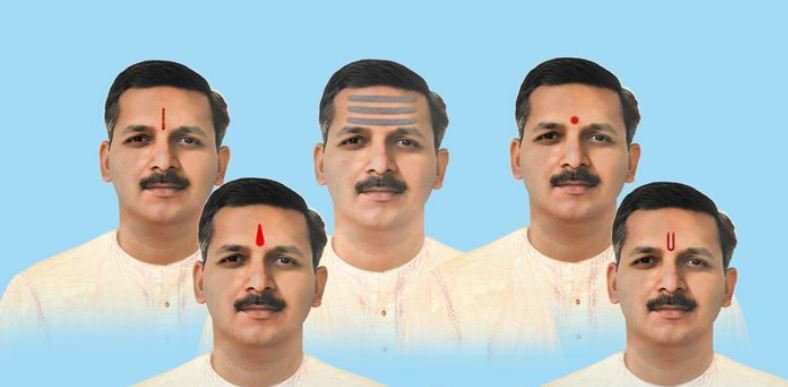

It was a beautiful morning on Feb 27th, 2014. As I entered my office building, I noticed that everyone from security guards to Janitor to my coworkers was looking (not staring) at me in a different way and I was completely unaware of the reason.
After a couple of minutes, one of my American coworkers Jessie walked into my cube and said:” Can I ask you to question? I don’t want to offend you, so if you feel uncomfortable, please don’t answer”. I was astonished that why he is so formal as we have been very good friends to my knowledge. I answered, Of course, Please go ahead. Then, he asked me what have you put on your forehead, just between your eyebrows, this light-yellow color dot pointing his finger at it? I said oh!! this dot, this is “Tilak”.
In fact, I have visited the temple on my way to the office that morning as it was Maha Shivratri and Pujari Ji has applied “Chandan Tilak” on my forehead. After few hours, Jessie emailed me all the links he googled about Tilak and asked me where he can get Chandan Tilak after reading its significance and advantages.
Isn’t it amazing guys that western men also want to apply Tilak on their forehead once they understand its significance and advantages?

In Hinduism, the “Tilak” in Sanskrit called “Tilaka” is a mark made on a Hindu’s forehead. On a man, the tilak takes the form of a line or lines and usually indicates his sectarian affiliation. On women, a tilak usually takes the form of a Bindi or red dot, which has its own symbolism.
The “Tilak” is worn every day by sadhus and all pious men, and on special occasions like weddings and religious rituals by all Hindu men. A tilak is also applied by a priest during a visit to the temple as a sign of the deity’s blessing, for both men and women.
In the United States, it’s not uncommon to see that non-Hindus (American men) also feel proud to get Tilaks applied on their forehead when offered during their visit either to Hindu Temple or Hindu friends on religious occasions.
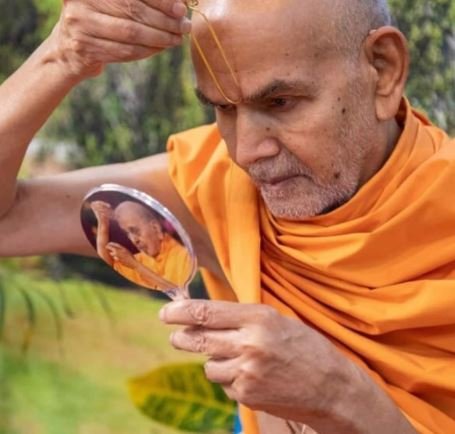
Generally, after a bath, Hindu men apply “Tilak” or a mudra (Symbol or a sign) before starting worship as per Vedic sectarian norms. Tilak marks are applied by hand or with a metal stamp. They might be made of ash from a sacrificial fire, sandalwood paste, turmeric, cow dung, clay, charcoal, or red lead. In addition to its religious symbolism, the tilak has a cooling effect on the forehead and this can assist in concentration and meditation.
Among some sects, the mark is made on 2, 5, 12, or 32 parts of the body as well as on the forehead. Tilak is a smear of paste, but other times it is more precise and elaborate.
Some Vaishnavas apply only one vertical line. Only the method of application differs, but the significance is the same in both the Vaishnavas and the Shaivas.
To apply tilak, mix the paste with either Ganga or Yamuna water, sacred river but if the water of this holy river is not available then normal water is taken and the below shloka is chanted while stirring tilak powder with water
गङ्गे च यमुने चैव गोदावरि सरस्वति ।
नर्मदे सिन्धु कावेरि जलेऽस्मिन् संनिधिं कुरु ॥
Gangge Ca Yamune Cai[a-E]va Godaavari Sarasvati |
Narmade Sindhu Kaaveri Jale-[A]smin Sannidhim Kuru ||
O Holy Rivers Ganga and Yamuna, and also Godavari and Saraswati, O Holy Rivers Narmada, Sindhu, and Kaveri; Please be Present in this Water and make it Holy.
While applying Tilak always the middle finger is used. As the middle finger is associated with the heart, the vibrations flowing through it are carried to the heart. When applying tilak to Parmeshwar in the mid-brow region vibrations emanating from the ‘Third Eye’ present there are carried by it to the heart, thereby generating devotion and Bhav (spiritual emotion) in the mind throughout the day and imparting Shanti (serenity).
The “Tilak” is of great spiritual meaning to all Hindus across the globe.
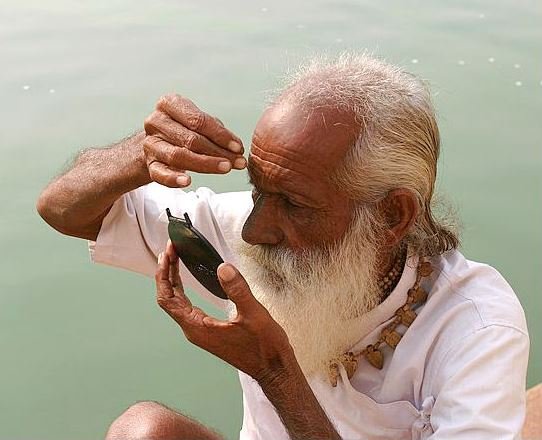
The spot where the “Tilak” is applied is where the body’s most important chakra rests the “Ajna Chakra”. Our body has seven key chakras, called energy centers. These chakras are a source of tremendous power.
The Ajna chakra is particularly sacred, as it is the point of confluence of the three main Nadis — “Ida”, “Pingala” and “Shusumna”. Therefore, it is also reverentially called “Triveni or Sangam”.
As the center of all cosmic energy, this pivotal spot is known as “Guru-Sthan”. Human consciousness resides here and is thus the dwelling place for the human mind. Vedas also mentions that the human entire body is controlled by this “Guru-Sthan”.
During yoga meditation, the mind is centered at this “Dhyana chakra“. The “Dhyana Chakra” represents the human subconscious mind and all teeming thoughts. Focusing one’s attention on the Ajna Chakra has a restful effect on the mind.
These are the reasons, great sanctity is attached to this spot on the forehead, and the “Tilak”, or “Tika” is rightfully applied here.
Chandan, sandalwood paste, has a calming effect so applying Chandan Tilak will be soothing too.

Also, in the Uttara-Khanda of the Padma Purana, Lord Shiva says to Parvati that in the middle of the “V” of the Vaishnava Tilaka mark there is a space and, in that space, reside Lakshmi and Narayana. Therefore, the body that is decorated with Tilaka should be considered a temple of Lord Vishnu. The Padma Purana also states:
vama-parshve sthito brahma dakshine cha sadashivaha |
madhye vishnum vijaniyat Tasman madhyam na lepayet ||
On the left side of the Tilaka Lord Brahma is situated, and on the right side is Sadashiva, but one should know that in the middle dwells Lord Vishnu. Therefore, one should not smear the middle section.
One should pour a little water into the palm of his left hand and rub gopi-Chandana (mud from Dwaraka) into it. When making Tilaka the following mantra from the Uttara Khanda of the Padma Purana should be recited:
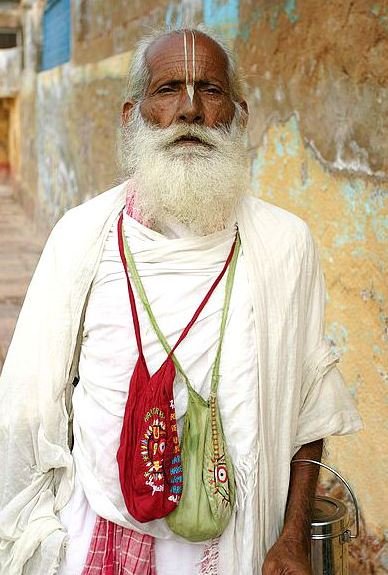
ललाटे केशवं विद्याद् नारायणं यथोदरे |
हृदये माधवं विद्याद् गोविन्दमुत्तुपके ||
lalate keshavam dhyayen narayanam athodare |
Hrdaye madhavam vidyad govindamuttupake ||
विष्णुश्च दक्षिणे कुक्षौ तद्भुजे मधुसूदनम् |
त्रिविक्रमं कर्णदेशे वामे कुक्षौ च वामनम् ||
vishnushch dakshine kukshau tadhuje madhusoodanam|
trivikramam karnadese vame kuksau ca vamanam ||
श्रीधरं च करे। वामे हृषिकेशं तु कर्णिका |
पद्मनाभस्ततः पृष्टे ककुद् दामोदरं स्मरेत् ||
sridharam ca kare vame hrsikesam tu karnika|
padmanaabhastatah prshte kakud daamodaran smaret||
As long as we humans are attached to Maya (The Great Illusion), it is advisable to worship the “Sagun” (Materialized) form of “Parmeshwar” (The Supreme God).
The human body is considered to be a temple of God. The “Sahasrar Chakra” is situated on the crown of the head in the region where a Choti, a tuft of hair retained while the rest of the scalp is shaved, is kept. That is the seat of the Nirgun (Non-Materialized) Parmeshwar. Sagun Parmeshwar dwells in the mid-brow region. Thus, so long as we are attached to Maya, it is advisable to worship the Sagun form of Parameswara.
“Tilak” when applied on the forehead between the eye-brows, generates devotion (bhakti), emotion(bhav), and imparts peace (Shanti). This is the reason that all Hindu spiritual masters initiate new seekers into the fold by applying tilak, invoking and awakening the divine light within. Without a guru, one may not have this subtle experience. Yet, such is the power of this auspicious spot that even a restless mind can be trained to relax, simply by focusing on the “Ajna chakra”.
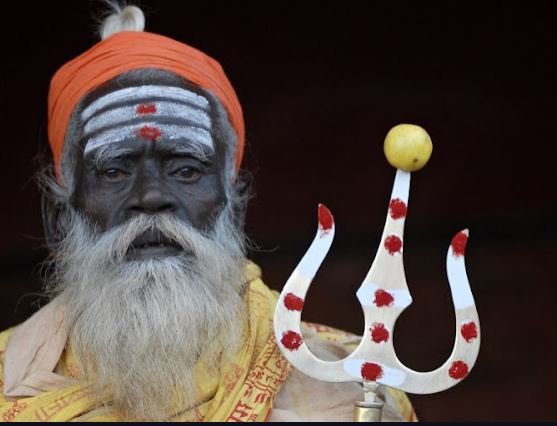
The application of Chandan (sandalwood paste) will nullify the heating effect when you concentrate and meditate at the Bhrumadhya. Tilak indicates the point at which the spiritual eye opens. Lord “Shiva” has a third eye at the Bhrumadhya. When he opens the third eye, the three worlds are destroyed.
So also, when the third eye of the Jiva is opened, the three kinds of afflictions are burnt to ashes –
All the sins committed along with all below three Karmas in the countless previous births are burnt down.
Every Hindu should remember this every time you apply a Tilak.
“I am the one non-dual Brahman free from all duality. May my eye of intuition open soon and I will finally attain Paramatma.”
DISCLAIMER: The author is solely responsible for the views expressed in this article. The author carries the responsibility for citing and/or licensing of images utilized within the text.
